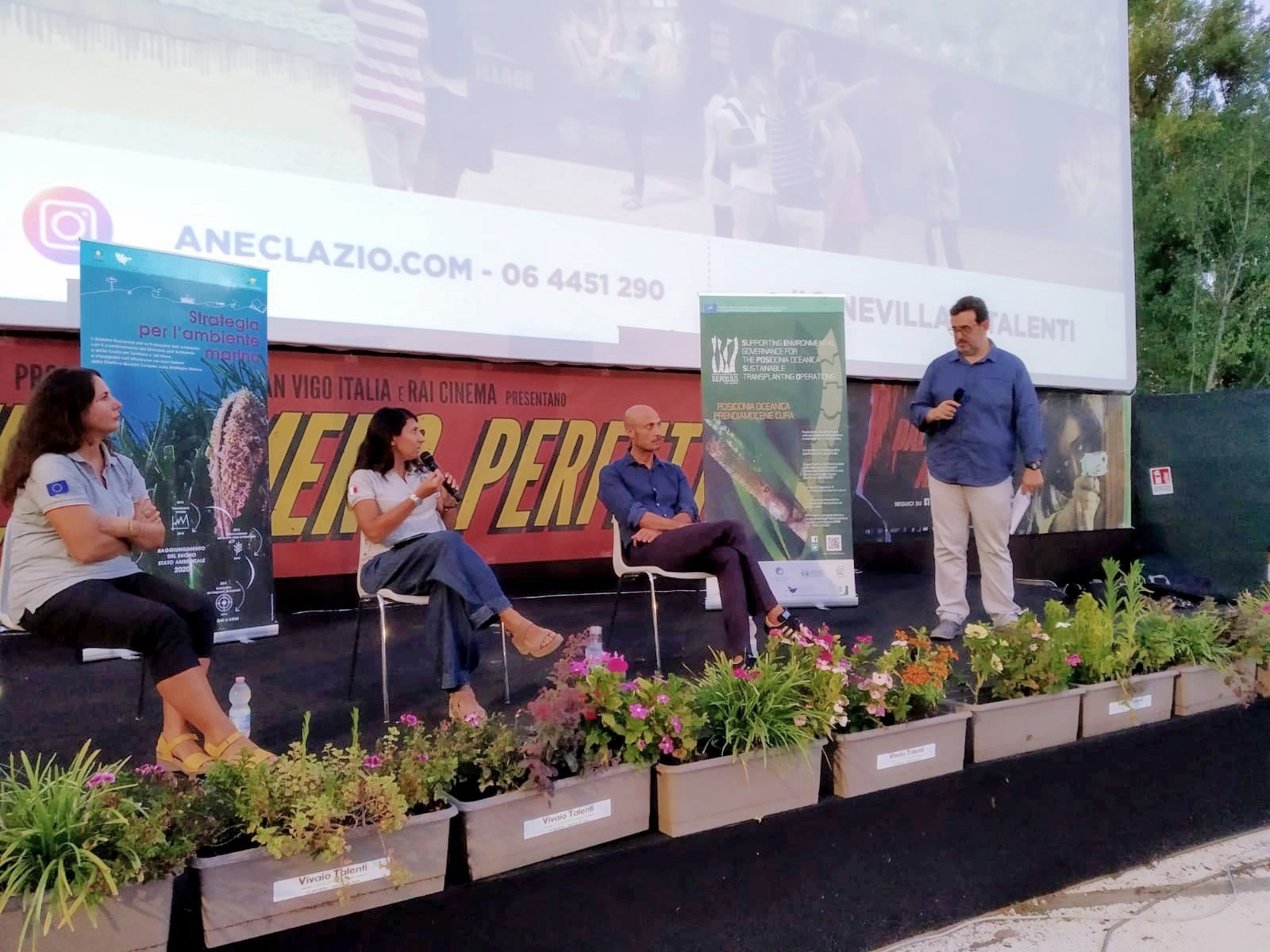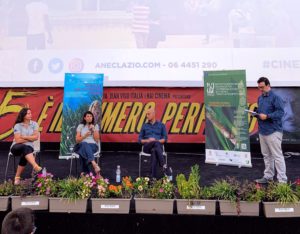
- ACTION D.1,NEWS,SEPOSSO
- No comments
Life SEPOSSO was one of the protagonists of the scientific disclosure evening “A sea to save”, held on Saturday 3 August, at 8.00 pm, at the CineVillage Arena Parco Talenti. The meeting was promoted by Scienza Insieme, research institutes and universities and represented the conclusive event of the cycle of conferences dedicated to the environment in the review “NOTTI di (FANTA) SCIENZA”.
Guests of the evening Gianmaria Sannino, researcher at the National Agency for New Technologies, Energy and Economic Development (ENEA); Marina Penna and Barbara La Porta, researchers from ISPRA (Institute for Environmental Protection and Research), moderator Marco Gisotti, journalist and popularizer.
Barbara La Porta, coordinator of Life SEPOSSO project, explained the importance of the Posidonia oceanica meadows, which are one of the richest and most beautiful resources in the Mediterranean. Unfortunately, human actions such as trawling, anchoring, pollution and waste destroy this habitat and with it all the annexed species: bivalve molluscs, seahorses, worms, juvenile fish and all the organisms that live on the prairie.
A few years ago, the transplantation of small Posidonia oceanica seedlings to a depth between 10 and 15 m was tested. Thanks to the project Life SEPOSSO (Supporting Environmental governance for the Posidonia oceanica Sunstainable translanting Operations) with the contribution of the European Commission we will try to to understand if transplants are effective measures to recover portions of Posidonia meadows that have been destroyed. The objective is to improve the Italian governance of Posidonia oceanica transplants, a protected habitat under the Habitat Directive (1992/43/EEC).

